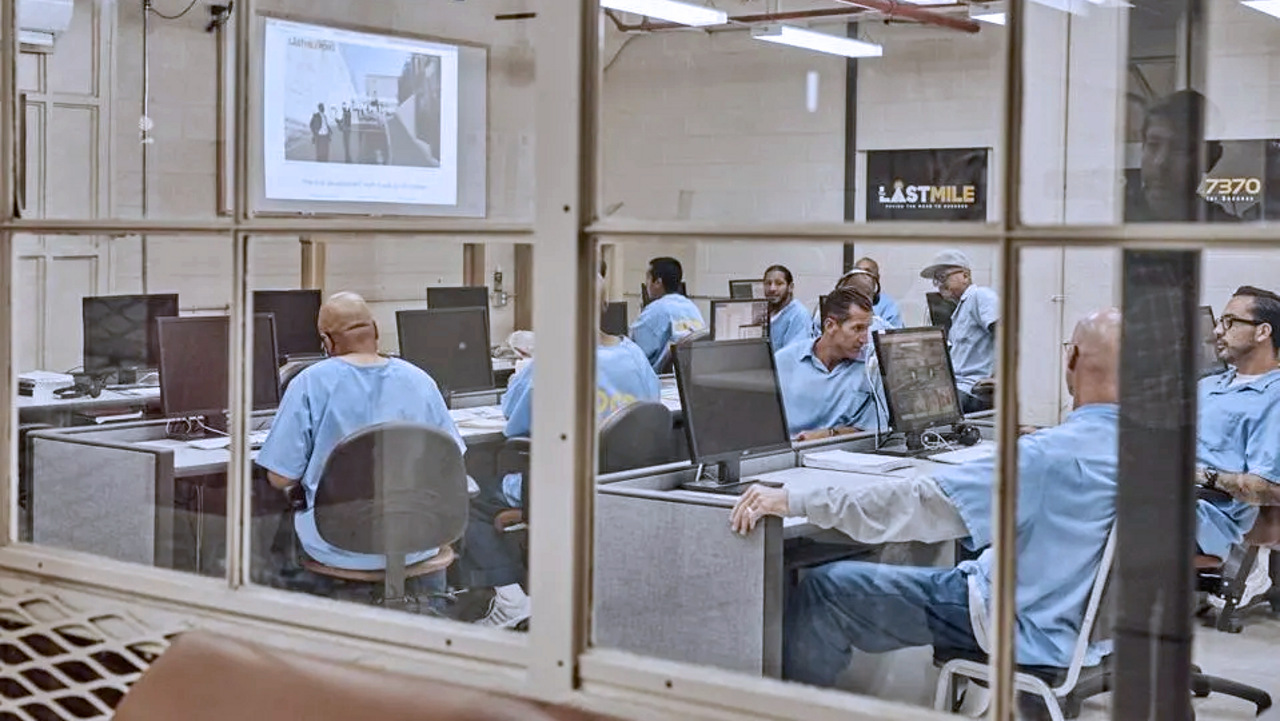
The internet is chock-full of gripes about Millennials, the smartphone-obsessed generation that reached young adulthood at the turn of the century. Millenials are entitled, lazy, self- —and selfie- —absorbed, and uninterested in the world at large. They vex and puzzle employers in equal measure, and they cannot be counted on to do anything other than, well, whatever they feel like doing.
Tell that to a new generation of app makers who are busy building programs that make it easy and fun to do massive good around the world. Their apps feed the hungry, clothe the naked, and shelter the homeless, all with a tap of that little screen typically reserved for Angry Birds or Amazon purchases.
The first wave of smartphone apps—the Instagrams, Foursquares, and Snapchats of the world—prided themselves on being social. This new generation of apps prides itself on being socially good, and they are being adopted most frequently by Millennials.
Apps that do social good range from ethical marketplaces like Orange Harp, which “makes the world more socially conscious and sustainable by providing people access to amazing products and behind-the-scenes details about how they are made,” to Feedie, which donates a meal to the non-profit Lunchbox Fund each time a user shares pictures of his or her own food at participating restaurants.
Far from wasting their time ordering stuff, broadcasting their breakfast plans, or gaming with friends, Millennials are using apps like these that do social good to change the world, because they are conditioned to do so, says Steve de Brun, co-creator of MicroHero, a free app that allows users to earn money for charity by taking online surveys.
“Smartphone users are ordering meals, cars, making appointments, and conducting more and more aspects of their personal and work lives from their devices,” de Brun says. “Why wouldn’t they also be able to donate, give back, or effect social change from their phones as well?”
To all the Millennial naysayers out there, it might be time to revise your criticisms: the Millennial generation is connected, conscientious, and ready to combat social ills.
Charity Meets Cool
Perhaps Millennials like to pat themselves on the back a little too much (we are only human). The human race has always had an altruistic streak; it is not exclusive to recent generations. Yet the youth of today have a few advantages that help them do more good faster, says Anbu Anbalagapandian, who works for the Orange Harp ethical mobile marketplace.
“With advances in technology, it is much easier to create solutions and have a bigger impact,” says Anbalagapandian. “For example, donating food from a local restaurant to a homeless shelter, or microlending to a small business in remote parts of the world, have been made incredibly easy.”
Orange Harp does what a decade ago might have been fiscally or physically impossible: it connects consumers with hand-picked fashion producers who use only the most ethical processes and materials. The app wears its rejection of unsustainable manufacturing like a badge of honor, broadcasting its work with small businesses that are good for people and the planet. The company goes so far as to condemn the “modern-day slavery” that defines the garment industry.
That approach seems to garner acclaim. The Orange Harp app is highly rated in Apple’s App Store, with consumers enthusiastic about knowing their dollars are being spent ethically. It was rated by Apple as one of the “best new apps” in 2015.
Orange Harp understands its millennial audience well: to do good, you have to look good, because if you look good, your message gets attention. If your message gets attention, it can spread like wildfire.
“Information spreads much faster now,” says Anbalagapandian. “We can use social media to create awareness around problems that affect our people and planet.”
“Information spreads much faster now,” says Anbalagapandian. Social media can “create awareness around problems that affect our people and planet.”
This is not a trend confined to apps that funnel money and donations to good causes.
SafeNight is an app that connects victims of abuse to hotel rooms when shelters are full. Smartphones are the ideal solution; rooms are needed in near-real time, and time is of the essence in domestic violence situations.
Project Noah is an app nature lovers can use to catalog animals and plants they encounter; the database is then used for conversation efforts.
VolunteerMatch connects aspiring do-gooders with opportunities to contribute their time to a good cause in their local area.
Global Impact
This is not just a movement for U.S.-based hipsters. The Lunchbox Fund, for example, provides daily meals to poor children in rural areas of South Africa. In 2013, South African cleric Desmond Tutu signed on as patron of the organization, which primarily solicited donations in his home country.
That same year, the Lunchbox Fund decided to expand its footprint in a cost-effective way, so it created the Feedie app to help it raise more money in other countries without hiring a huge canvassing force or running a global marketing campaign.
Here is how it works: Feedie users connect the app to their social networks. They then use the app to share photos of their meals in participating restaurants, and those restaurants make donations to The Lunchbox Fund to feed hungry children.
At press time, more than 12 million meals had been sponsored for children worldwide by Feedie.
ShareTheMeal is another app that does good in a cost-effective way by leveraging cross-border engagement. Developed by the United Nations World Food Program, the app makes it easy for a user to tap once and donate $0.50, enough to feed a child for an entire day in most of the world. Instead of costly outreach, users may download the app from anywhere in the world and donate. The U.N. claims this initiative’s administrative costs are among the lowest in the non-profit world, with 90% of donations going directly to operations.
“So many people want to dedicate time and energy to charities that they feel passionate about, but there may be certain factors preventing them from doing so, like geographic barriers,” says Sophie Barnett, the Lunchbox Fund’s digital coordinator. “Social good apps, accessible from anywhere, at any time, have made doing good infinitely easier.”
Social good apps succeed because they are a win-win-win for charitable organizations, users, and participating businesses. In the case of Feedie, restaurants pay $500 as a tax-deductible donation in anticipation of 2,000 photos of their meals being posted. They receive baked-in buzz as photos of their culinary creations are shared by users who feel good when they do good, and they garner media attention when Feedie is featured by media outlets like Mashable, The Huffington Post, and Time, marketing exposure for which many businesses would gladly pay. Thanks to Feedie’s ingenuity, businesses pay to feed the hungry instead.
“We want to make taking a Feedie photo as ubiquitous as posting to Instagram and create a sustainable, scalable impact,” says Barnett.
Doing Well While Doing Good
Feedie highlights an important truth about social good apps of any type: those that create the biggest impact are the ones that help others do well while doing good. That is exhibited in the business model of the MicroHero survey-taking app.
Users are asked to complete free surveys in MicroHero; each completed survey results in a donation to the user’s favorite charity by companies that conduct market research, or businesses that have pressing questions they need answered. The result is a type of conscientious capitalism that gives businesses a direct incentive to support charitable causes. Currently, MicroHero works with over 200 charities, including the World Wildlife Fund and the American Red Cross.
Social good apps succeed because they are a win-win-win for charitable organizations, users, and participating businesses.
This model only works when you understand how consumers actually use smartphones; you cannot simply use an app notification to ask for a donation and call it a day, says Micro-Hero’s de Brun, adding that apps must provide an experience just like any consumer product.
“Smartphone operating systems and app user interfaces are getting better at serving end users in natural, even delightful ways,” he says. “If done well, social good actions can be very spontaneous and efficient from a phone.”
In short, charitable giving cannot only become widespread on mobile devices; it can become second nature if done right, just like opening Facebook or checking Snapchat. There is an added financial benefit for consumers, too: you can claim many types of charitable donations as tax deductions. While the apps themselves do not offer much help with this (you still must claim a charitable donation on your own), they do make it easier to give in the first place.
De Brun believes social good apps like MicroHero are just getting started.
As user bases grow, social good app developers will find more fluid ways to connect in-app actions with actual monetary impact. Gamification will help: the more giving feels like play, the more engagement we will see from socially conscious users. Widespread adoption, says de Brun, will cause more corporate social responsibility programs to get in the game, and that is when things will start to get really interesting.
When social good apps appeal not just to individuals but entire corporations, their impact grows by orders of magnitude.
That is because the incentives for doing good and doing well are aligned. “Entrepreneurs are inventing business models that provide social good and provide for a profitable, sustainable business,” de Brun says.
Other app makers agree. Nick Marino is director of Social Change at TangoTab, an app that donates a meal to local food charities each time a user checks in at a local restaurant. “I believe we have seen an overall increase in businesses working with causes,” Marino says.
Restaurants like Starbucks, Nobu, and Maggiano’s have signed up to work with TangoTab, because the best social good apps leverage consumer behavior to create real change, Marino explains.
“Apps like TangoTab are making it easier for people to make a difference by doing things they already do daily. People dine out all the time. We give people the opportunity to impact someone in need just by doing what they’re already doing.”
Wigglesworth, V.,
(2015) SafeNight app comes to the aid of domestic violence victims in North Texas. The Dallas Morning News. http://www.dallasnews.com/news/domestic-violence/20151009-safenight-app-comes-to-the-aid-of-domestic-violence-victims-in-north-texas.ece
Godfrey, M.,
(2013) Feedie App Turns Food Photos Into Charitable Giving. ABC News. http://abcnews.go.com/Technology/feedie-app-turns-food-photos-charitable-giving/story?id=20060750
Chang, L.,
(2015) With the ShareTheMeal App, Your 50-Cent Donation Can Help End World Hunger. Digital Trends. http://www.digitaltrends.com/mobile/help-end-world-hunger-with-the-uns-sharethemeal-app/







Join the Discussion (0)
Become a Member or Sign In to Post a Comment